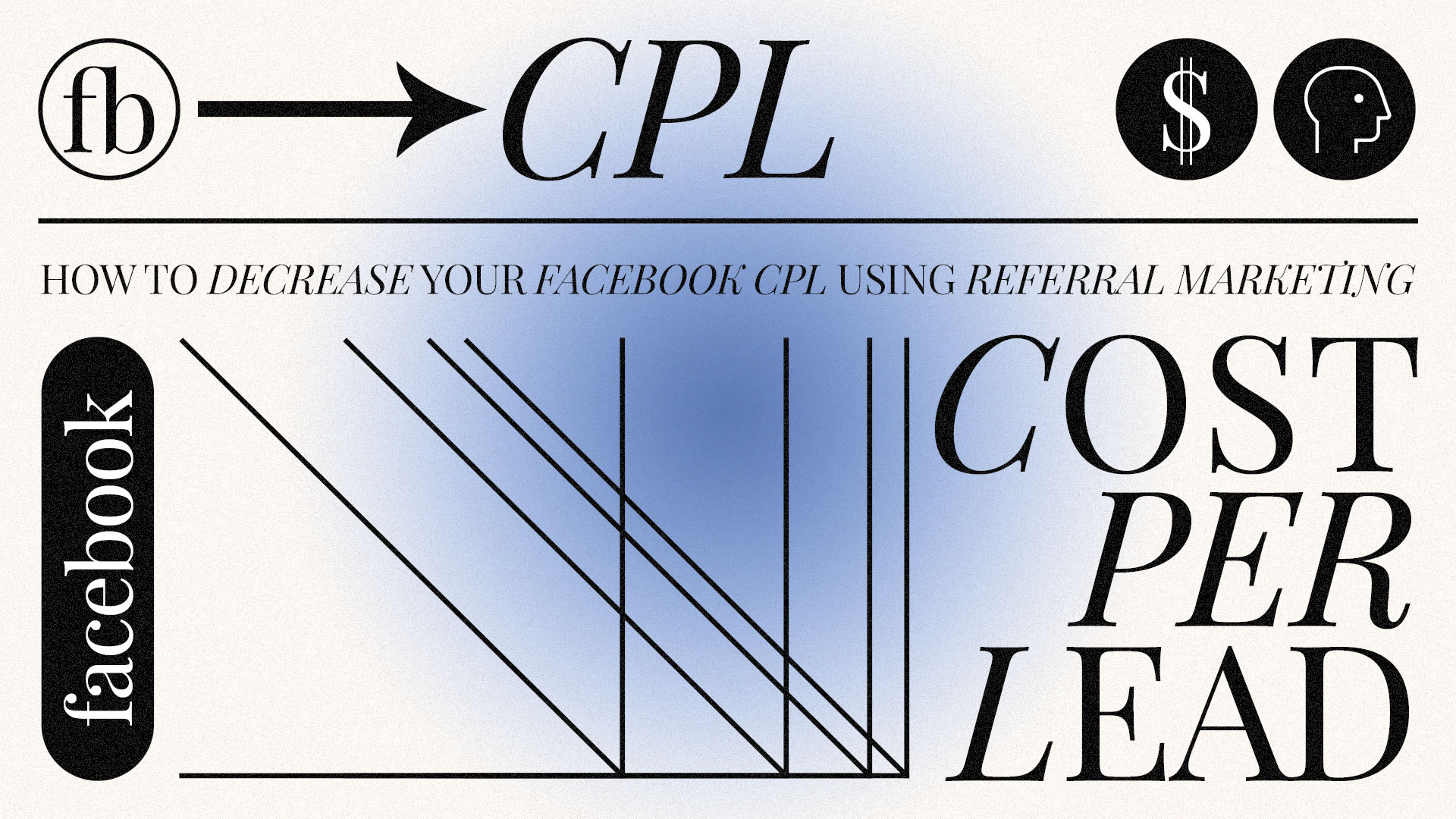Lowering acquisition costs represents a crucial goal for marketers aiming to maximize return on investment. So the question of how to reduce cost per lead on Facebook isn’t just a random inquiry—it’s now a necessity!
Key Takeaways:
Referral marketing can slash your Facebook CPL by up to 75%
When customers invite friends using referral codes, acquisition costs drop dramatically from an average of $7 to as low as $1.75 per lead.Strategic audience segmentation delivers immediate cost improvements
Targeting hot audiences like recent purchasers and cart abandoners generates leads at a fraction of cold audience costs.Retargeting campaigns consistently outperform cold targeting
Businesses report 3-5x lower CPL with retargeting compared to standard acquisition campaigns.Landing page speed directly impacts conversion rates and CPL
Reducing load time from 7 seconds to 2 seconds can recover up to 60% of potential conversions lost to abandonment.A/B testing reveals unexpected performance insights
Systematic testing uncovers counterintuitive factors that dramatically impact campaign performance.
Cost Per Lead (CPL) optimization remains a significant challenge in today’s competitive ad space. The average Facebook ad cost currently stands at $28.84 per lead, making cost-effective strategies increasingly valuable for businesses of all sizes.
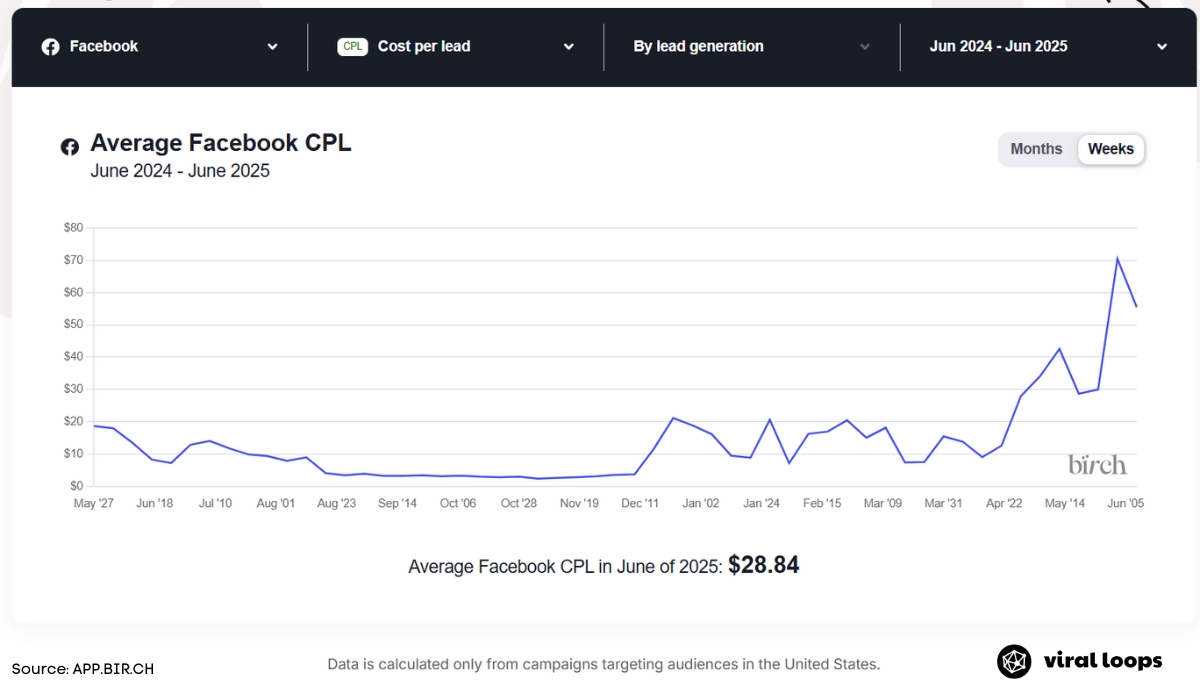
This article analyzes effective methods on how to reduce cost-per-lead on Facebook through an often overlooked avenue: referral marketing strategies.
These approaches transform existing customers into brand ambassadors while significantly cutting acquisition costs.
The techniques discussed apply to businesses regardless of industry or size, offering practical solutions for immediate implementation to generate sales.
What is Referral Marketing?
Referral marketing functions as a channel utilizing word-of-mouth and recommendations to expand a business’s customer base through existing customer networks.
This strategy takes various forms while maintaining its core premise of engaging loyal fans and spreading brand awareness.
Referred leads convert 30% better and demonstrate 16% higher lifetime value than leads from other channels. Half of Americans prefer word-of-mouth over any other information source when researching potential purchases.
This approach effectively converts current customers into brand ambassadors, promoting products or services.
Referral marketing represents more than lead generation—it builds trust through personal recommendations that carry more weight than traditional advertising methods.
Use Referral Marketing to Bring Down Your Business Costs
Referral marketing substantially reduces business expenses despite seeming counterintuitive at first glance.
Let’s say for example you acquire a customer through Facebook ads at $7 per acquisition. This customer then invites several friends, with three of them pushing through and uses a referral code offering 15% off their first purchase.
Your cost per lead drops dramatically from $7 to just $1.75 per customer! This cost reduction happens organically as satisfied customers share their positive experiences with others.
The financial impact extends beyond immediate acquisition costs to higher conversion rates and customer lifetime value.
Referred customers typically demonstrate stronger brand loyalty and higher spending patterns than those acquired through paid channels.
The compounding effect of successful referral programs creates sustainable growth without proportional increases in ad spend.
Smart Segmentation: How to Prioritize Your Facebook Referral Audiences
Segmenting audiences into “hot,” “warm,” and “cold” categories enhances referral campaign effectiveness. Hot and warm audiences represent remarketing opportunities, while cold targeting expands business reach to new potential customers.
Retargeting campaigns should target people who already know your brand, not just campaign participants.
Consider testing these audience segments from hottest to warmest for optimal results:
Recent purchasers (last 5-30 days): These customers already trust your brand and have the highest potential for referrals. They’re ideal for milestone referral programs or ambassador initiatives.
Cart abandoners (last 5-30 days): This segment showed strong interest but didn’t convert. Referral incentives might provide the extra push needed to complete their purchase.
Referral landing page visitors (last 5-10 days): These users explored your referral program but didn’t participate. A reminder of benefits often motivates action from this engaged group.
Email subscribers (last 30 days): Recent subscribers demonstrate fresh interest in your brand. Their engagement levels typically remain high during the first month after subscribing.
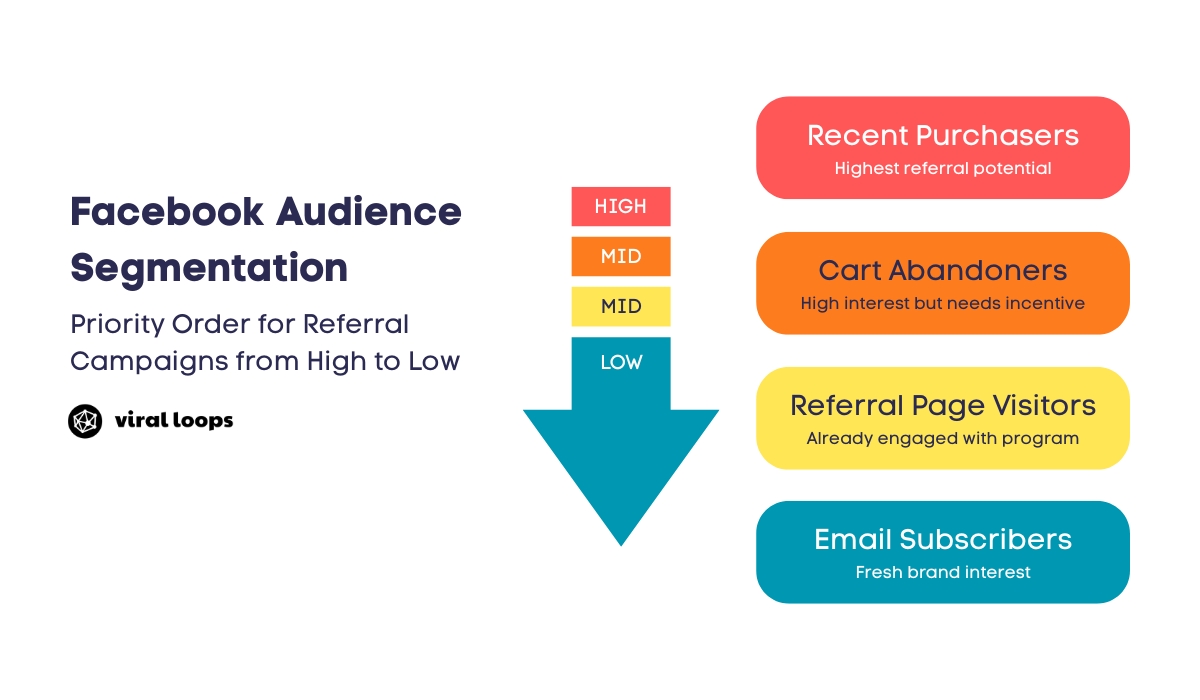
Additional valuable segments include:
Facebook page engagers (last 20-90 days) – These users have already interacted with your content. They’re more likely to respond positively to referral requests than cold audiences.
Instagram engagers (last 20-90 days) – Visual engagement on Instagram often indicates strong brand affinity. These users frequently become effective brand advocates with proper incentives.
Website visitors (last 5-60 days) – This broader segment captures interested prospects who haven’t converted yet. Different timeframes work best for different industries and sales cycles.
Place each audience in dedicated ad sets rather than combining them to identify top performers. This approach allows precise optimization based on conversion data and prevents audience overlap that can increase costs.
Enhancing Referral Marketing for Lower CPL
The smart approach is to use specialized tools designed to streamline referral marketing campaigns and reduce lead costs. Tools like Viral Loops offer comprehensive solutions that address common implementation challenges.
These referral marketing platforms solve several key problems that businesses face when launching campaigns. The setup process becomes simple through step-by-step guides that walk users through configuration.
No technical skills are needed. Ready-made templates work for different business types: from online stores to tech companies. Each template is already optimized for specific referral methods.
The biggest barrier for most businesses disappears when platforms include built-in page builders. You can create landing pages without any coding knowledge.
This removes the common problem of needing developers to launch referral programs. The tools also connect easily with your existing email systems and customer databases. This means no manual copying of data between different marketing tools.
The real-time dashboard that Viral Loops has show you how your campaigns are performing right away.
You can see which channels bring the best results and how engaged your participants are. This information helps you make quick improvements to your campaigns. You can focus your efforts on what works best and stop using channels that don’t perform well.
When set up correctly, these referral systems greatly reduce the cost of getting new customers while reaching more people.
Viral Loops is designed to be user-friendly, making referral marketing possible for all business sizes. It doesn’t matter if you have limited technical resources or marketing experience.
Try it for free and see for yourself how it can effectively reduce CPL on Facebook.
Additional Tips to Reduce Your Facebook CPL
Combining paid advertising with referral marketing is the top strategy to reduce your customer acquisition costs. But let’s not stop there!
Here are a few more strategies you can implement to get the most out of your advertising funds:
1. Target a More Specific Audience
Facebook ads become more effective when targeting a specific audience rather than broad demographics.
Narrowing the target audience reduces competition from other brands bidding for similar audiences.
This approach increases the odds that promoted content will resonate with individuals, improving engagement metrics.
Specific audience targeting enables tailored ads that appeal to precise demographics, geographic areas, and interest profiles.
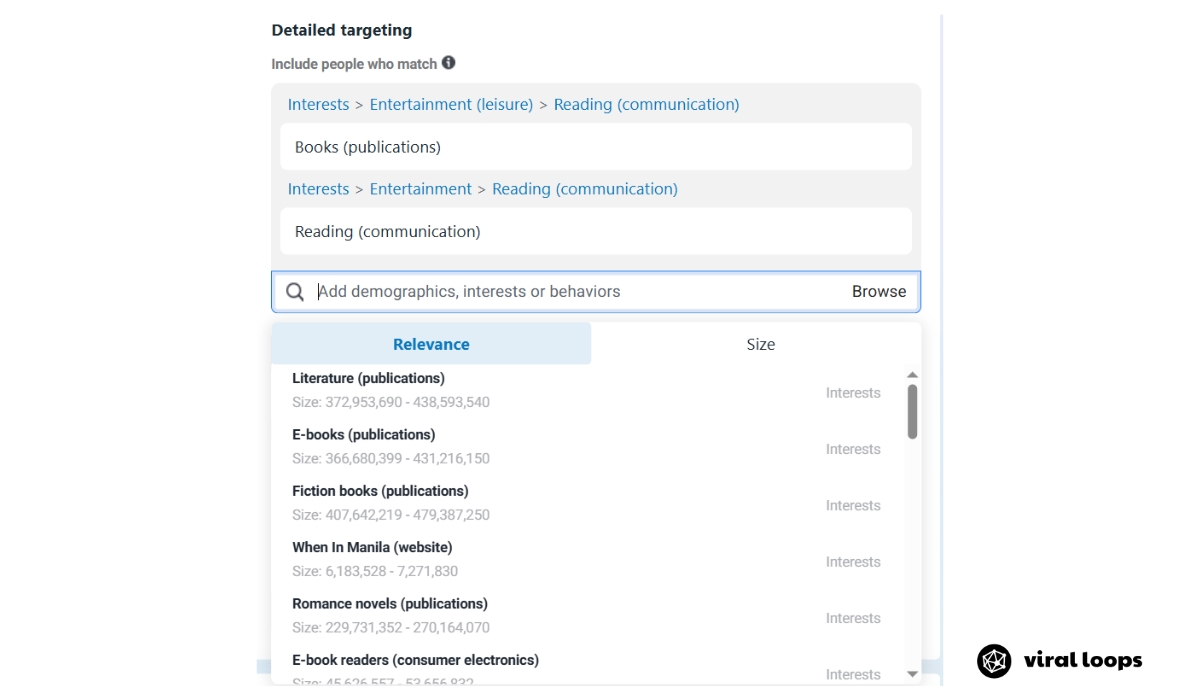
One children’s book brand found success by targeting self-employed mothers of children ages six to nine instead of many demographic categories.
While a broad audience achieved good reach, conversion rates remained low until they refined their target audience parameters.
Perfectly matched content, tone, and product offerings significantly improved all key performance metrics.
This precision targeting directly impacts CPL by focusing resources on the most valuable potential customers.
2. But Don’t Go Too Niche!
While specific targeting improves efficiency, excessively narrow audience definitions can increase costs. Advertisers often define audiences too restrictively, causing unit costs to rise dramatically.
Finding the optimal balance between specificity and reach remains crucial for cost-effective lead generation. The ideal approach targets a specific audience precisely enough to maintain relevance without limiting potential reach.
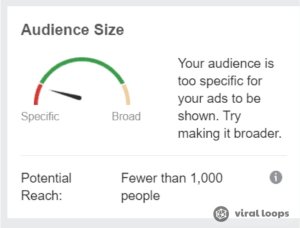
Overly restrictive parameters can reduce impressions and increase bidding competition for the remaining eligible users. Testing broader variations of successful narrow audiences often reveals cost-effective expansion opportunities.
Monitoring key metrics like cost per thousand impressions, click-through rate, and conversion rates while gradually expanding audience parameters helps identify the sweet spot.
This balanced approach maintains targeting effectiveness while keeping acquisition costs manageable.
3. Limit Your Ad Placement
Ad placement selection significantly impacts Facebook ad performance and lead generation costs.
Analyze which placements consume budget without generating conversions, then remove these underperforming options.
- The Facebook Audience Network, which displays ads outside Facebook, often costs more without delivering proportional results.
- Instagram typically commands higher costs per click ($0.80) compared to other placement options.
- Facebook’s Audience Network generally offers lower costs averaging around $0.20, making it cost-effective for certain ad campaigns.
- Mobile news feed placements frequently outperform desktop placements for engagement-focused campaigns.
Regular performance analysis across placement types reveals opportunities to redistribute daily budget toward higher-converting options.
This optimization reduces wasted spend while improving overall campaign efficiency and lowering CPL values.
4. Target People in the Middle of the Funnel
Implementing a funnel approach to Facebook ad campaigns substantially reduces CPL through strategic audience targeting. Begin with brand awareness ads targeting users unfamiliar with your business, focusing on high reach and low costs per click.
Create an engagement audience of users who previously interacted with awareness ads, indicating interest and movement toward the consideration phase.
Target this mid-funnel audience with product-focused ads highlighting features, pricing, and promotions alongside remarketing audiences.
This bidding strategy gives complete control over budget allocation based on funnel position.
Warming potential leads before requesting conversion actions dramatically decreases acquisition costs over time.
Users who have already engaged with awareness content convert at significantly lower costs than a broad audience. This structured approach creates more efficient conversion paths while maximizing return on ad spend.
5. Run Retargeting Campaigns
Retargeting campaigns represent one of the most effective yet underutilized strategies for reducing Facebook CPL. Every lead generation campaign should include retargeting ads to re-engage users after initial exposure.
Remarketing typically produces qualified leads at substantially lower costs than initial acquisition campaigns. Effective ad creative includes:
Video ads featuring testimonials from satisfied clients
Image carousels featuring tips or testimonial quotes
Additional incentives like discount codes for hesitant prospects
These formats leverage previous brand exposure to create more compelling conversion opportunities. They address common objections and reinforce benefits to move prospects toward action.
Targeting people who previously interacted with your website proves particularly valuable for e-commerce businesses.
Retargeting website visitors who added products to carts without completing purchases creates high-converting opportunities.
The Facebook algorithm rewards higher engagement with improved ad delivery and lower cost per lead.
Combining retargeting with referral mechanics amplifies results by leveraging both previous interest and social proof simultaneously.
This technique proved successful for Joywears during their Kickstarter campaign using the Milestone referral template. Their approach converted each signup into 1.4 additional signups through strategic Facebook advertising.
Also, when brands pick rewards that highlight who they are and show off their product quality, their referral programs get much stronger results.
This approach gets the best out of both marketing strategies and keeps total spending down at the same time.
6. Use Lookalike Audiences
Creating lookalike audiences based on existing high-value customers significantly improves targeting precision while reducing acquisition costs.
Lookalike audiences derived specifically from Facebook lead ads often outperform those created from imported databases.
The algorithm identifies patterns among your most valuable customers and finds users with similar characteristics.
Starting with a 1% lookalike audience focuses on the closest matches before testing broader percentages.
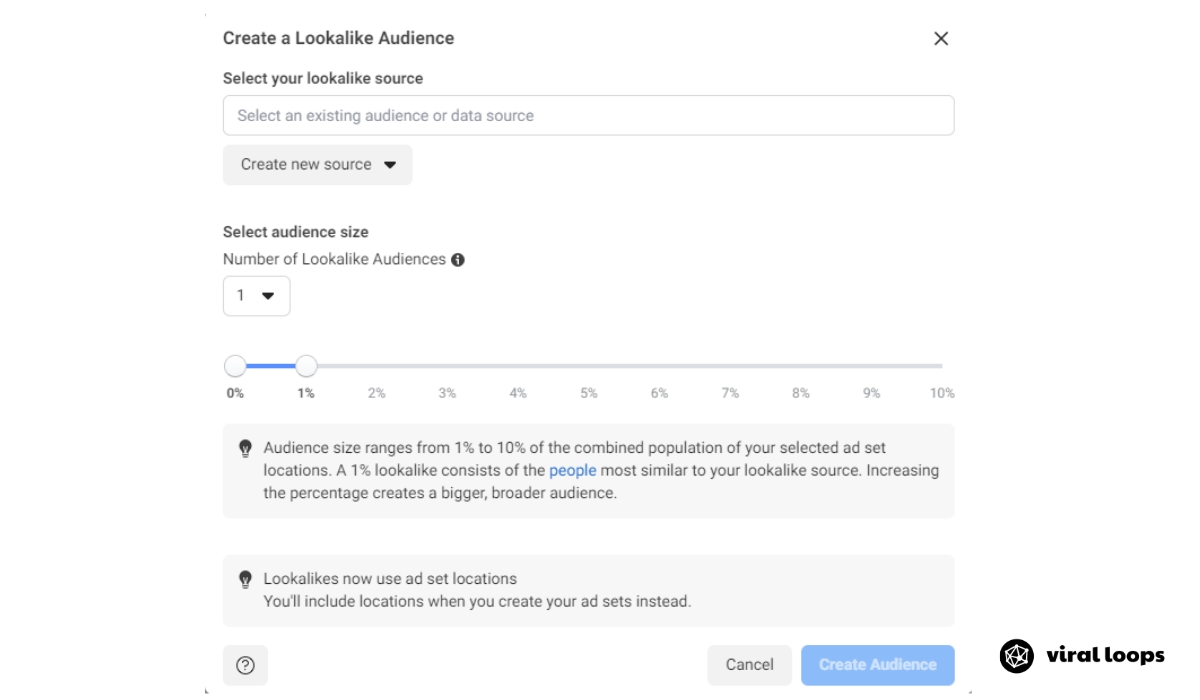
Seed audiences from different customer segments create specialized lookalike groups for targeted messaging.
Combining lookalike audiences with interest-based targeting often produces the most cost-effective results.
This approach leverages Facebook’s vast data capabilities to find potential customers with high conversion probability.
Regular refreshing of seed audiences maintains targeting accuracy as customer profiles evolve over time.
7. Boost Organic Facebook Posts
With organic reach falling to around 5%, boosting relevant posts represents a cost-effective lead generation strategy. Target boosted posts to “People who like your Page and their friends” while limiting ad delivery to relevant target market areas.
This approach connects with an audience already familiar with your brand and their personal networks. Some businesses report generating more leads for as little as 5 cents using this method.
Boosted posts typically appear more natural and less promotional than traditional conversion ads. The social proof of existing engagement creates additional credibility and interest among new viewers.
Starting with small boost budgets allows testing different content types before scaling successful posts. This strategy combines the benefits of organic content with paid reach enhancement at minimal cost.
8. Use Audience Targeting to Craft Ad Copy
Effective ad copy directly addresses the specific audience segment targeted, creating personalized communication that increases click-through rate.
Develop messaging that reads as though speaking directly to individual customers rather than generic marketing language.
Qualify leads through specific copy elements that pre-filter interested prospects from casual browsers.
For example, mortgage lenders focusing on healthcare professionals as a target audience might start ads with “Attention Healthcare Pros” to immediately qualify the audience.
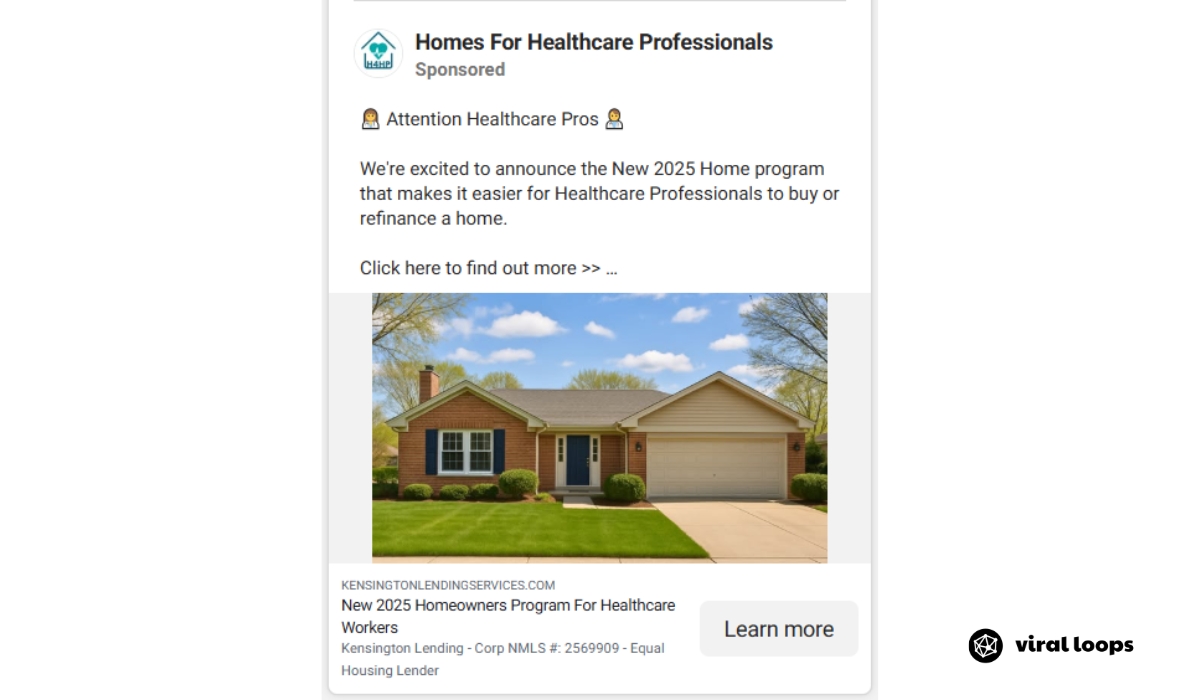
Include defining characteristics like neighborhood, property type, or timeframes in real estate marketing to attract precisely matched prospects.
This approach reduces overall clicks while increasing qualified leads and lowering cost per lead.
Connecting ad creative directly to audience targeting parameters significantly improves relevance scores and algorithm performance.
The resulting higher ad quality leads justify potential reductions in overall click volume.
9. Take Advantage of Customer Testimonials
Leveraging customer testimonials in ad copy provides powerful third-party validation that improves conversion rates.
Authentic reviews and testimonials grab attention more effectively than standard marketing claims.
Photo ads clearly conveying benefits and features help prospects understand value propositions before clicking. This pre-qualification speeds information submission once prospects reach landing pages.
Including specific results or statistics from customer experiences adds credibility and urgency to offers. Video ads featuring testimonials typically outperform text formats for engagement and conversion metrics.
Short, authentic quotes addressing common objections or highlighting key benefits work particularly well.
Combining testimonials with referral incentives creates a powerful persuasion loop that reduces acquisition costs.
This approach harnesses social proof while encouraging additional referrals from satisfied customers.
10. Write Engaging Headlines
Facebook advertising success depends on capturing attention within the first two seconds as users scroll their feeds. Headline quality directly impacts click-through rates and subsequent conversion costs.
Invoking curiosity and interest in these critical initial moments prevents users from scrolling past content. Calling out target people directly in headlines immediately filters qualified prospects from casual browsers.
Questions that prompt self-identification work particularly well for engagement and qualification. Headlines addressing specific pain points generate stronger responses than generic messaging.
Character count matters significantly, with shorter, punchier headlines typically outperforming longer variations. Testing multiple ads with different headline variations reveals surprising performance differences that significantly impact overall campaign costs.
The most effective headlines connect directly to visual elements for reinforced messaging and attention retention.
11. Direct People to a Giveaway
Giveaways provide compelling reasons for users to comment on ads, potentially triggering likes and shares that expand organic reach.
Running ads to referral giveaways that collect email addresses produces leads at significantly lower cost per lead than direct lead ads.

Target these promotions to top-of-funnel audiences who haven’t previously interacted with your brand. Structure giveaways to encourage multiple engagement types beyond email submission, such as:
Social media page follows
Website collection page visits
Content sharing on personal profiles
Comment engagement on promotional posts
These additional actions create multiple touchpoints that strengthen brand recognition. They also generate valuable data for future targeting refinement.
Some businesses report CPL drops from $2 to $0.13 after implementing sweepstakes strategies with sharing incentives.
Incorporating additional entry opportunities for sharing, commenting, and liking posts drives down acquisition costs through expanded organic reach.
This approach generates both immediate leads and valuable remarketing audiences for future campaigns.
Offering substantial value tailored to target communities creates stronger engagement than generic prize offerings.
12. Improve Your Landing Page Load Speed
Landing page loading speed critically affects conversion rates and directly impacts Facebook CPL.
Within three seconds of clicking an ad link, 50% of potential revenue disappears due to abandonment during loading delays.
Each additional second costs approximately 20% of remaining visitors, resulting in 80% loss at 6-7 second load times.
Pages loading in 1-2 seconds prevent bounces, increase time on page, and improve conversion rates.
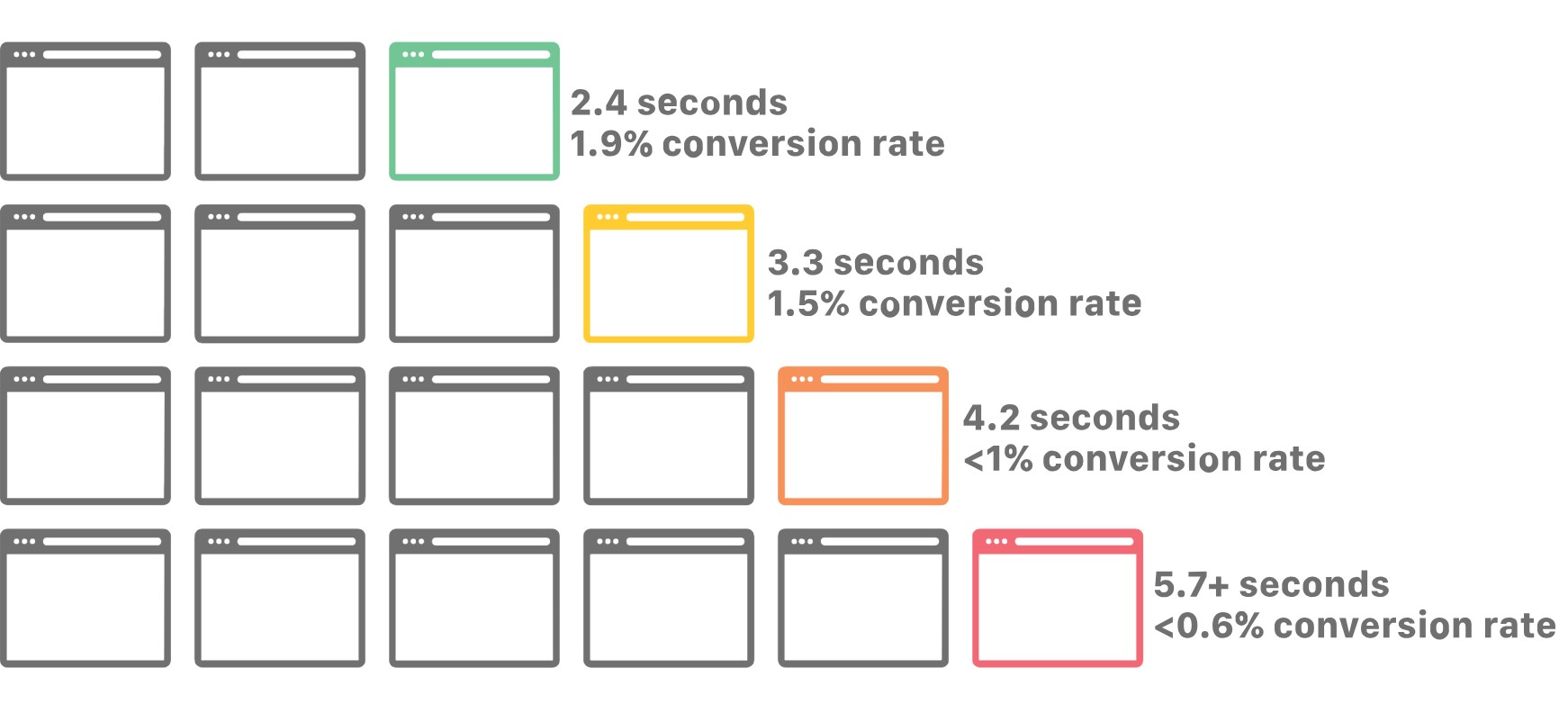
Image source: CloudFlare
These engagement metrics provide positive feedback to Facebook’s algorithm, which rewards good user experiences with lower costs per thousand impressions.
Mobile optimization remains particularly important as most Facebook traffic comes from mobile devices.
Regular testing across devices ensures consistent performance regardless of access method.
Simple improvements like image compression, code minification, and caching often produce dramatic performance gains.
These technical optimizations deliver substantial CPL reductions without requiring changes to creative or targeting.
13. Run A/B Tests
Continuous A/B testing represents the most reliable method for systematically reducing Facebook CPL over time.
Run multiple ads concurrently with variations of single elements, including ad copy, headlines, images, or target market parameters.
Establish control ads (best performers) before testing new variations to ensure progressive improvement.
Develop diverse creative assets at campaign launch to maximize optimization potential and prevent ad fatigue.
Split test different audience types:
LTV custom audiences
Lookalike audiences of varying percentages
Interest-based segments
Behavior-based targeting groups
Testing these audience variations reveals optimal targeting combinations for your specific offerings. Regularly refreshing test parameters prevents audience fatigue.
Compare lead ads performance against traffic campaigns sending users to dedicated landing pages.
Test different messaging angles and creative assets within each campaign type for comprehensive optimization.
Maintain variables constant except for the element being tested to accurately identify performance factors.
This methodical approach builds proven, high-performing ads campaigns based on data rather than assumptions.
Regular testing remains necessary as market conditions and competitor activities evolve continuously. Running fb ads requires ongoing optimization to maintain performance.
Before You Go
Referral marketing is a powerful way to lower your Facebook advertising costs while building real relationships with customers.
When people recommend your business to friends, it costs less to get new customers and makes your brand look more trustworthy.
When you combine smart referral programs with good Facebook ads, you create lasting growth for your business. This works for companies in any industry. The methods we’ve shared in this article can make your marketing more effective and profitable.
Keep testing new ideas and watching your results. Markets change, so your approach should too. Think about how these strategies might work for your specific business and customers.
The best referral programs offer good rewards and make things easy for users. They also focus on results you can measure.
Start small with a few tests. Once you find what works, you can use it across all your marketing.
Don’t let expensive Facebook ads slow down your business growth.
Thousands of companies already use tools like Viral Loops to turn their customers into advocates. It dramatically reduces what they pay for each new lead on Facebook. Why don’t you check it out?
Frequently Asked Questions
Why is my cost per lead so high on Facebook?
Your CPL may be high due to a broad audience, poor ad relevance, or competitive bidding in your industry. Ad creative quality and landing page experience also significantly impact conversion costs.
How to lower Cost-per-Lead on Facebook ads?
Implement precise audience targeting, use engaging creative assets, set up retargeting campaigns, and running ads side-by-side with referral marketing. Also, test different ad formats, refine your messaging for specificity, and optimize landing pages for conversions.
What is a good cost per lead on Facebook?
A good CPL varies by industry but generally ranges from $5-$25. Financial services might expect $40-60, while retail might target $10-15 per lead.
